Husband of astronaut trapped in space by faulting Boeing Starliner makes very surprising claim about wife’s confinement high above Earth
The husband of an astronaut stuck in space indefinitely claims she won’t be disappointed when she makes it into space.
Michael Williams, husband of astronaut Sunita Williams, told the Wall Street Journal that space is his wife’s “happy place,” even though the prospect of a return flight raises the specter of her life evaporating.
Williams’ Boeing Starliner’s thrusters suffered problems after its June launch, meaning the rockets must either repair the Boeing spacecraft and rely on it to return home, or wait for a Space X option that could last well into next year.
Williams has been on the International Space Station (ISS) with Butch Wilmore for two months now and the duo learned this week that their flight back to Earth could be delayed again.
Sunita Williams (pictured), one of the NASA astronauts currently on an indefinite hiatus on the ISS, won’t be upset about her extended stay because space is her “happy place,” her husband said
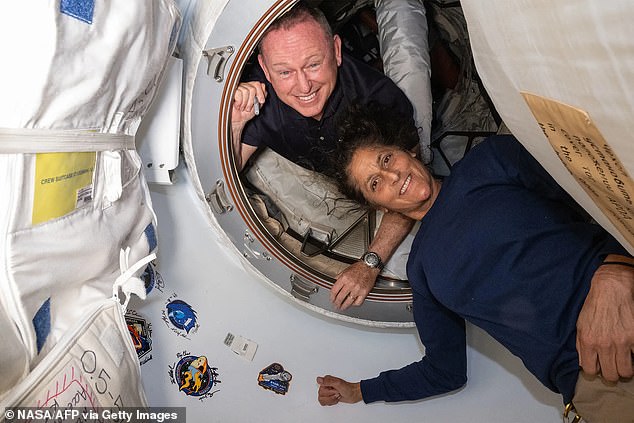
Williams spent two months with astronaut Butch Wilmore on the ISS, despite their original mission only being scheduled to last eight days
Williams and Wilmore may not return until February 2025, as NASA has a contingency plan in place to send a two-person crew on SpaceX’s Crew-9 mission in September. However, the crew would not return home for months.
When they launched in the spring, the astronaut duo was only scheduled to stay on the ISS for eight days.
But the mission has been underway for two months now with no definitive end in sight. They have to stay in space because they fear that using the Starliner again could end in disaster.
The Boeing spacecraft suffered from thruster failures and helium leaks, forcing teams in space to conduct tests to determine if the capsule could fly.
Boeing, which has come under fire this year for a series of plane crashes and near-misses, said it has “confidence in the Starliner spacecraft and its ability to safely return crew.”
However, experts told DailyMail.com in June that NASA could be forced to launch a rescue mission, suggesting Elon Musk’s SpaceX could be called in to help.
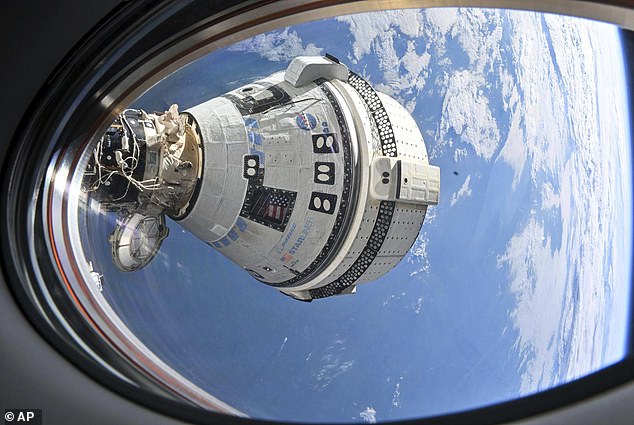
The crew’s return mission has been delayed several times since launch in June due to leaks and thruster problems during the journey to the International Space Station (ISS).
During their extended stay in space, Williams and Wilmore will stay on the ISS with seven other astronauts.
According to the WSJ, their days are typically filled with scientific research and shuttle maintenance, as well as educational content, such as answering questions live from students and schoolchildren.
They exercise several hours a day to counteract the bone and muscle loss that comes with space travel, and their vital functions are monitored from the ground.
Astronauts typically work and sleep in eight-hour periods, although they are essentially always on call.
Mike Gruntman, an astronautics professor at the University of Southern California, told DailyMail.com that “it is more likely that SpaceX will be able to conduct an additional launch in the near future to bring the astronauts back.”
“It is deeply unfortunate that Boeing’s Starliner, after so many flight delays, is still experiencing problems,” Gruntman said.
“Boeing was one of the most admired aerospace and defense companies for decades. This is a true national tragedy.”
NASA stresses that the astronauts have not technically been abandoned and that they can use the Starliner again in the event of an emergency.
However, the crisis that kept the astronauts in space stemmed from a disagreement over a plan to use Boeing’s own data to assess the safety of the Starliner.
Boeing continues to maintain it is safe, but Steve Stich, head of the Commercial Crew Program, said authorities have not been able to reach a conclusion.
“We heard from a lot of people expressing concerns, but the decision wasn’t clear,” added Ken Bowersox, NASA’s chief space officer.
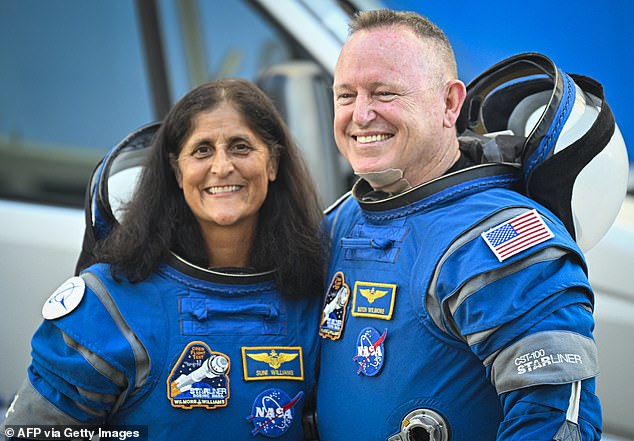
Williams and Wilmore were seen shortly before their June launch, following several previous delays and postponements caused by the Boeing shuttle
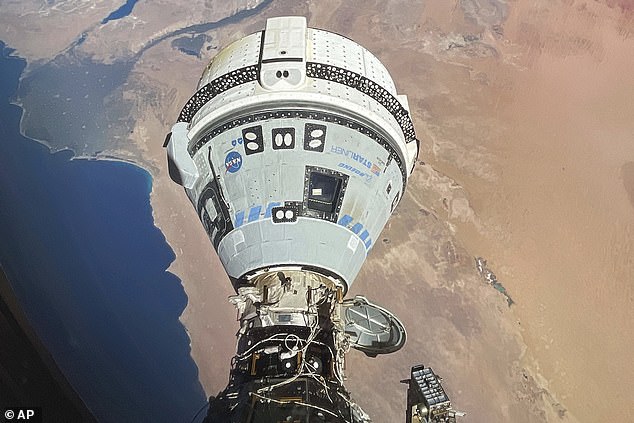
Starliner has suffered five failures of its 28 maneuvering engines, five leaks of helium gas intended to pressurize those engines and a slow-moving fuel valve that indicated past problems that had not been resolved since launch.
While no decision has been made on whether to deploy SpaceX’s Starliner or Crew Dragon, NASA has given Boeing more time to conduct more tests and gather more data to better demonstrate Starliner’s reliability.
The leak that ruined the expedition was first discovered after the Starliner’s first planned launch in May, when crews discovered a valve leaking helium and canceled the mission.
Engineers suspected the problem was caused by a faulty rubber seal the size of a shirt button. They said that even if the leak got worse, it could be fixed during the flight. The next launch was scheduled for June 1.
However, Starliner suffered another setback when the capsule was automatically stopped by a computer-controlled system just minutes before launch.
The delay was caused by computers on the Atlas V rocket’s launch pad coordinating the final moments before launch, but the Starliner capsule appeared healthy, officials said.
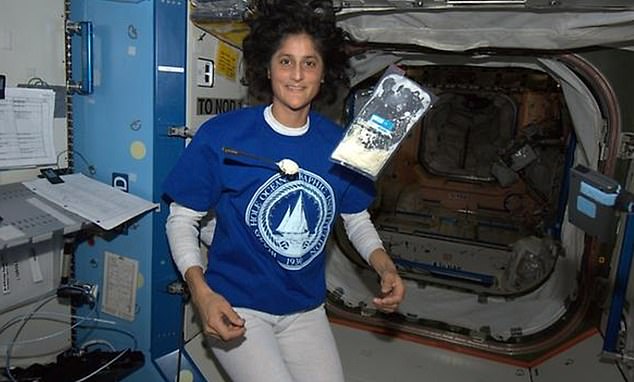
While waiting in space, Williams conducts science experiments, exercises several hours a day and provides educational content for schoolchildren
The issue raised concerns among a NASA contractor, who urged the US space agency to “re-run safety checks and re-examine safety protocols to ensure the Starliner is safe before something catastrophic happens.”
Starliner suffered five failures in its 28 thrusters, five leaks of helium gas used to pressurize the thrusters, and a slow-moving fuel valve that indicated unresolved problems since launch.
When Starliner arrived near the space station for docking on June 6, five thruster failures prevented the spacecraft from approaching the station until Boeing fixed the problem.
Boeing has been testing thrusters on the ground and in space in recent weeks to determine why five thrusters failed just before Starliner arrived at the space station.
All but one came back online. Helium leaks in the capsule’s propulsion system were also discovered.
